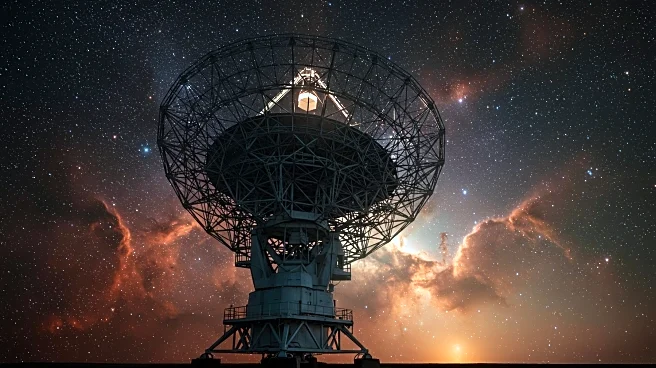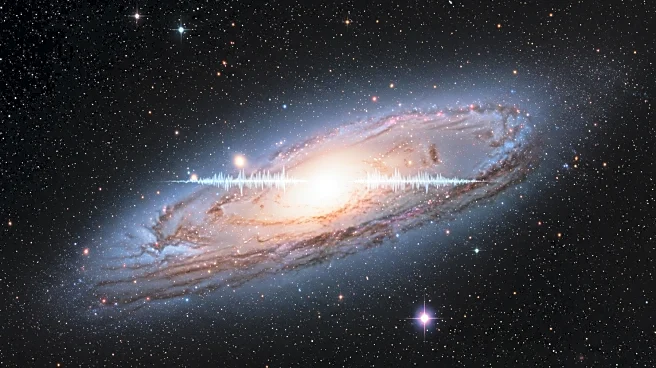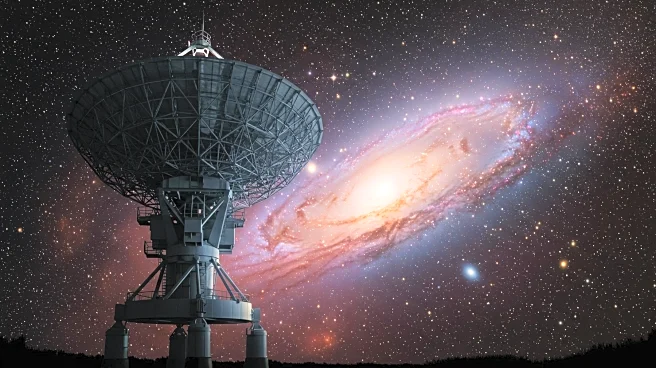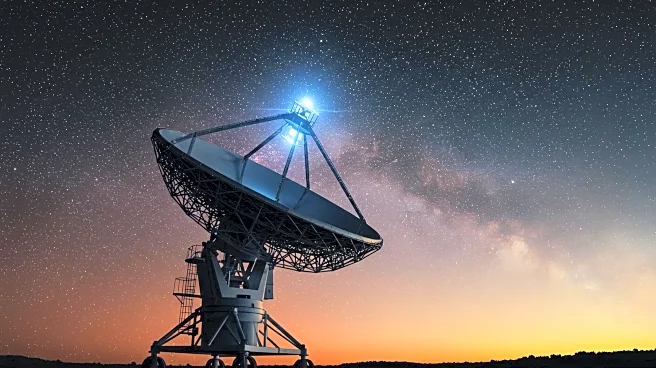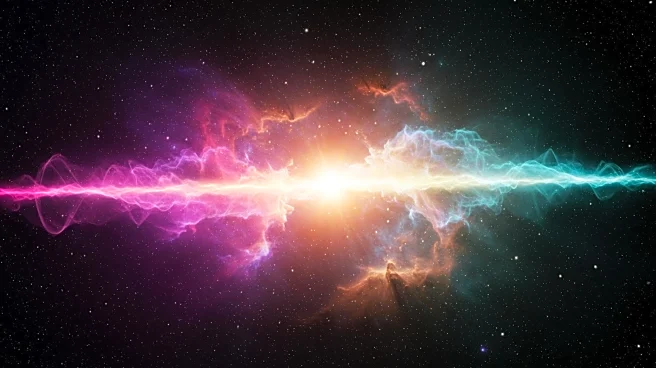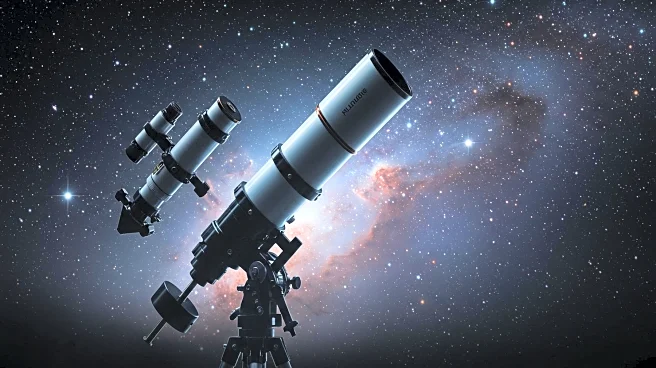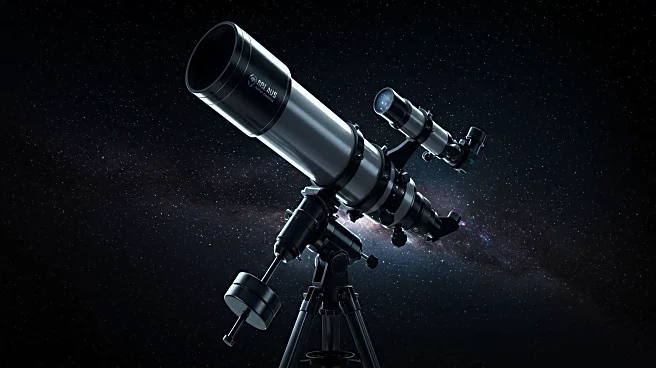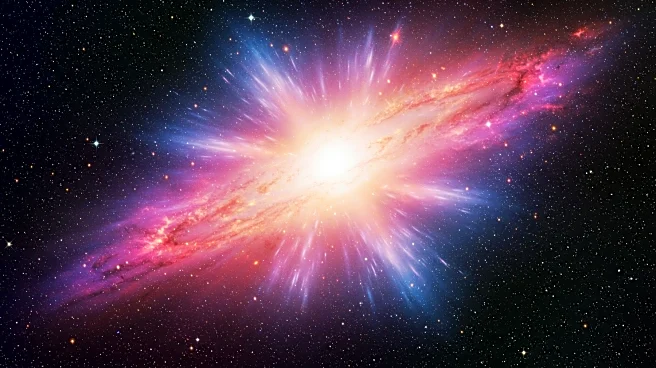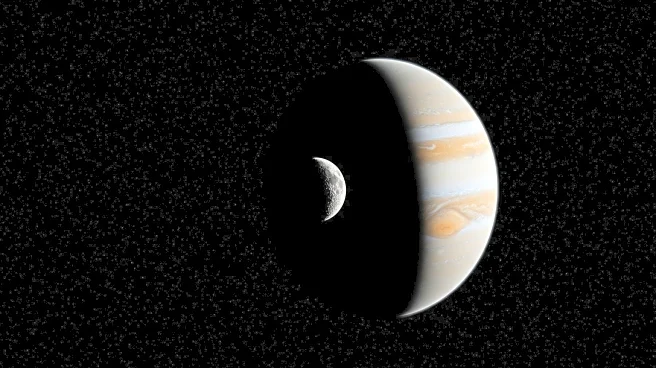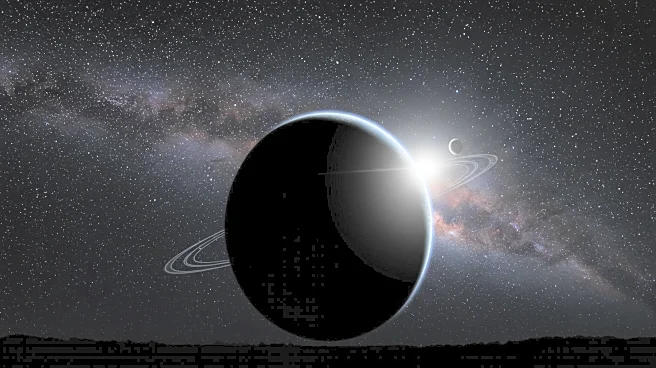What's Happening?
An international team of astronomers has successfully traced the origin of one of the brightest fast radio bursts (FRBs) ever detected, marking a significant advancement in understanding these mysterious cosmic phenomena. Using the Canadian CHIME/FRB radio telescope, researchers pinpointed the source of the FRB, named 20250316A or 'RBFLOAT', to a region just 45 light-years across in a galaxy located 130 million light-years away. This precise localization was achieved with the help of outrigger telescopes across North America and the James Webb Space Telescope (JWST), which captured a faint infrared signal from the host galaxy, NGC 4141. The discovery allows scientists to explore the stellar environments that might produce such powerful bursts, potentially involving magnetars or neutron stars.
Why It's Important?
This breakthrough in tracing the origin of FRBs is crucial for the scientific community as it opens new avenues for understanding the universe's most energetic events. The ability to pinpoint the source of an FRB with such precision could lead to identifying the types of stellar systems responsible for these bursts, which have puzzled astronomers for years. The findings could also refine existing theories about the nature of FRBs, such as their potential connection to magnetars or binary star systems. This research not only enhances our knowledge of cosmic phenomena but also demonstrates the capabilities of advanced astronomical tools like the JWST, which can resolve individual stars in distant galaxies.
What's Next?
The research team is preparing to capture future FRBs with the same level of detail, aiming to further unravel the mysteries surrounding these bursts. They plan to quickly deploy the JWST to observe new FRBs as they occur, hoping to gather more data that could confirm or refute current hypotheses about their origins. The ongoing study of FRBs will likely continue to challenge and refine our understanding of the universe, potentially leading to new discoveries about the life cycles of stars and the dynamics of galaxies.
Beyond the Headlines
The ability to trace FRBs to specific stellar environments could have broader implications for astrophysics, including insights into the life cycles of stars and the conditions that lead to extreme cosmic events. This research may also influence the development of new technologies and methodologies in radio astronomy, enhancing our ability to study the universe in unprecedented detail.
